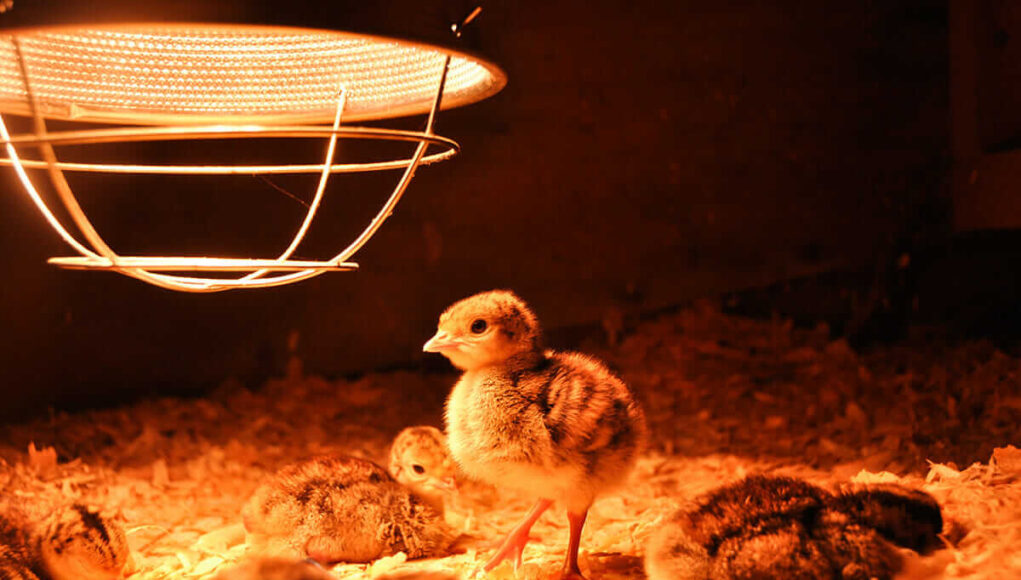Engaging in a chick brooder science project is not just an exciting classroom activity; it’s a hands-on experience that combines biology, animal husbandry, and environmental science. This project offers a unique opportunity for students and chicken lovers to delve into the world of poultry care, learning about the essentials of raising healthy chicks. This article takes you through the intricacies of setting up a brooder, the science behind it, and how it can be an enriching educational endeavor.

Understanding the Importance of a Brooder
Before embarking on your chick brooder science project, it’s vital to understand what a brooder is. A brooder is an enclosed space that provides warmth and safety to baby chicks. It mimics the conditions under a hen’s wing, offering the necessary environment for growth and development. Setting up a proper brooder is crucial for ensuring the health and well-being of the chicks.
Components of a Chick Brooder
To create an effective brooder, you need to consider several components: heat source, bedding, food, and water. These elements ensure that the chicks are kept warm, comfortable, and well-nourished.
Heat Source
Chicks are unable to regulate their body temperature, so a consistent heat source is essential. Most brooders use heat lamps or heating plates to maintain the right temperature. For detailed guidance on selecting the right heat source, you can check out brooder setup tutorial.
Bedding
Bedding helps keep the brooder clean and provides a soft surface for the chicks. Materials such as pine shavings or straw are popular choices. Its important to change the bedding regularly to prevent the growth of bacteria and mold.
Food and Water
Providing access to clean water and a balanced diet is vital. Starter feed is specially formulated to meet the nutritional needs of growing chicks. Regularly check and refill the food and water supplies to ensure the chicks remain healthy.
The Science Behind Brooding
The chick brooder science project is a fantastic way to explore biological processes. Chicks require a specific environment to thrive, and maintaining this environment involves understanding thermoregulation, nutrition, and hygiene.
Thermoregulation
Maintaining the right temperature in the brooder is crucial. Chicks need a warm environment, usually around 95F during the first week, gradually reducing by 5F each subsequent week. This gradual temperature reduction mimics the natural process as they grow feathers and become more capable of regulating their body heat.
For more insights on managing temperature effectively, refer to brooding chicks in the house.
Nutrition
Nutrition plays a critical role in the growth and development of chicks. The starter feed should be rich in proteins and essential vitamins. Introducing grit to their diet is also important as it aids in the digestion process. Learn more about the right time to introduce grit by visiting introduce grit in brooder.
Hygiene
Maintaining hygiene in the brooder is crucial to prevent diseases. Regular cleaning of the brooder and changing of bedding are necessary practices. Ensure that water containers are clean and free from contaminants.
Educational Benefits
Participating in a chick brooder science project offers numerous educational benefits. It provides a practical learning experience that integrates science, responsibility, and empathy towards animals.
Hands-on Learning
Through this project, students get a hands-on experience in animal care, learning about life cycles, and the importance of environmental control. These are essential skills in biology and environmental science education.
Responsibility and Empathy
Caring for chicks teaches responsibility as students must ensure the chicks’ needs are met daily. It also fosters empathy, as they develop a bond with the animals they are nurturing.
Getting Started with Your Project
To begin your chick brooder science project, start by gathering all necessary materials, including a brooder box, heat lamp, bedding, food, and water containers. Plan your project timeline, including regular observation and recording data about the chicks’ growth and behavior.
For space-saving tips when setting up your brooder, explore space-saving chick brooder.
Conclusion
The chick brooder science project is a rewarding educational experience that combines scientific inquiry with practical skills. It provides valuable insights into the life of chicks and the science behind their care. By engaging in this project, students and chicken enthusiasts alike can develop a deeper appreciation for poultry care and the responsibilities that come with it.

Frequently Asked Questions
What is the ideal temperature for a chick brooder?
The ideal temperature for a chick brooder starts at 95F during the first week, decreasing by 5F each week as the chicks mature.
When should I introduce grit to the chicks?
Grit can be introduced once the chicks start eating foods other than starter feed, typically around 2-3 weeks of age. For more details, you can visit introduce grit in brooder.
How often should I clean the brooder?
The brooder should be cleaned weekly, with bedding changed regularly to maintain hygiene and prevent disease.
For additional tips on setting up a brooder, check out this guide on setting up a brooder.
This article contains affiliate links. We may earn a commission at no extra cost to you.











